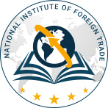Common Mistakes New Importers and Exporters Make & How to Avoid Them – Part 1
Navigating the global marketplace as a new importer or exporter is an exciting but complex endeavor. With opportunities to connect with international buyers and suppliers, import-export businesses have potential for tremendous growth. However, many new traders encounter pitfalls that can jeopardize profitability and business longevity. From miscalculating costs to selecting unreliable suppliers, common mistakes can hinder success if left unaddressed. Understanding and avoiding these errors not only safeguards your investment but also ensures smoother transactions. Let’s explore five of the most common mistakes new importers and exporters make and actionable strategies to avoid them.
Understanding Regulatory Compliance
Entering the global trade arena without thoroughly understanding regulatory requirements is one of the biggest mistakes that new importers and exporters make. Each country has unique import-export laws, tariffs, and customs regulations, which are often complex and challenging to navigate. Non-compliance can result in significant fines, shipment delays, and even business closure.
Tips for Navigating Compliance
- Research Destination Regulations – Begin by identifying the specific regulations that apply in both your country and the destination country.
- Consult Legal Experts – Engaging with an international trade consultant or legal expert can provide valuable insights into compliance and help avoid costly mistakes.
- Stay Updated on Changes – Regulatory changes happen frequently. Subscribing to industry newsletters or setting up alerts can keep you informed of the latest compliance updates.
Proactively addressing compliance helps new importers and exporters avoid unnecessary penalties and keeps business operations smooth and efficient.
Underestimating Import and Export Costs
Another frequent error is underestimating the actual costs associated with importing and exporting goods. Many new businesses assume that costs only include the product and shipping fees, overlooking additional expenses like customs duties, warehousing, and insurance. These hidden costs can significantly impact profitability if not accounted for early on.
Steps to Calculate and Manage Costs
- Factor in All Possible Costs – Create a comprehensive list that includes transportation, customs duties, warehousing fees, and any potential inspection fees.
- Use a Freight Forwarder – Freight forwarders can help estimate the full cost of shipping, offering expertise that helps minimize unexpected fees.
- Negotiate Terms with Partners – Some costs can be mitigated by negotiating Incoterms (International Commercial Terms) that define the responsibilities of buyers and sellers.
By thoroughly understanding all associated costs, importers and exporters can ensure accurate pricing and maintain healthier profit margins.
Choosing Unreliable Suppliers or Buyers
Selecting the right suppliers and buyers is crucial to the success of any import-export business. Rushing into partnerships with unreliable or unvetted partners can lead to a host of issues, including substandard product quality, shipment delays, and financial losses.
How to Find Reliable Partners
- Request References – Always ask potential partners for references from other clients to assess their credibility and reliability.
- Conduct Background Checks – Use platforms like Alibaba or Global Sources that offer supplier verification, or consult with local trade associations for trusted referrals.
- Start with Small Orders – Before committing to large shipments, consider placing a small trial order to evaluate quality and delivery performance.
Working with reputable partners ensures that you receive quality products on time, reducing the risks associated with unreliable supply chains.
Inadequate Market Research
Failing to understand the target market is a common pitfall that new importers and exporters often overlook. Effective market research helps traders identify potential customer demand, competitive landscape, and pricing expectations, which are essential for making informed decisions.
Conducting Effective Market Research
- Identify Demand – Determine if there’s a genuine demand for your product in the target market by examining sales trends and consumer behavior.
- Analyze Competitors – Study your competitors’ offerings, pricing, and distribution strategies to find your competitive edge.
- Use Reliable Data Sources – Leverage government trade databases, industry reports, and international trade organizations that offer insights into market dynamics.
Armed with robust market research, businesses can make informed decisions that align with demand, avoiding the risks of entering an unsuitable or overly saturated market.









